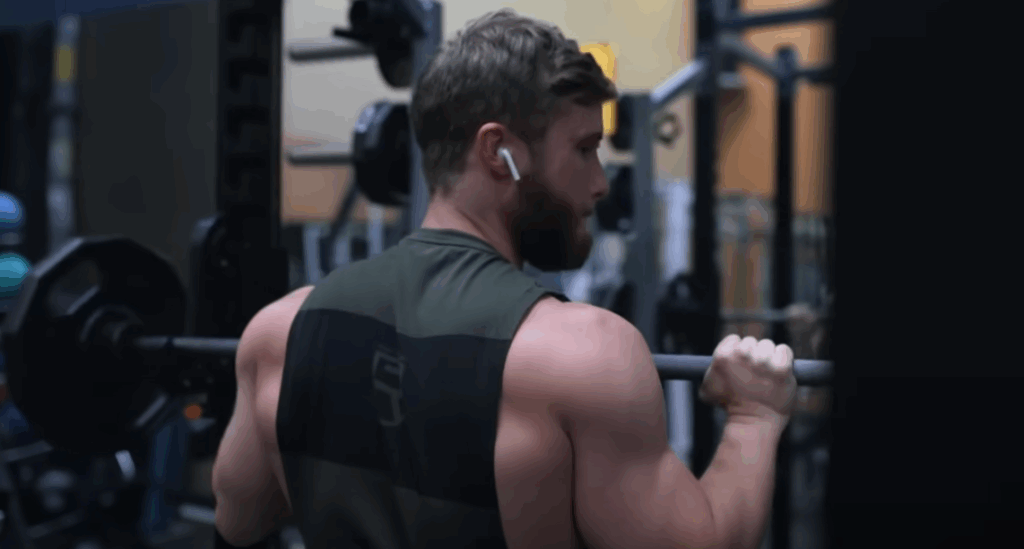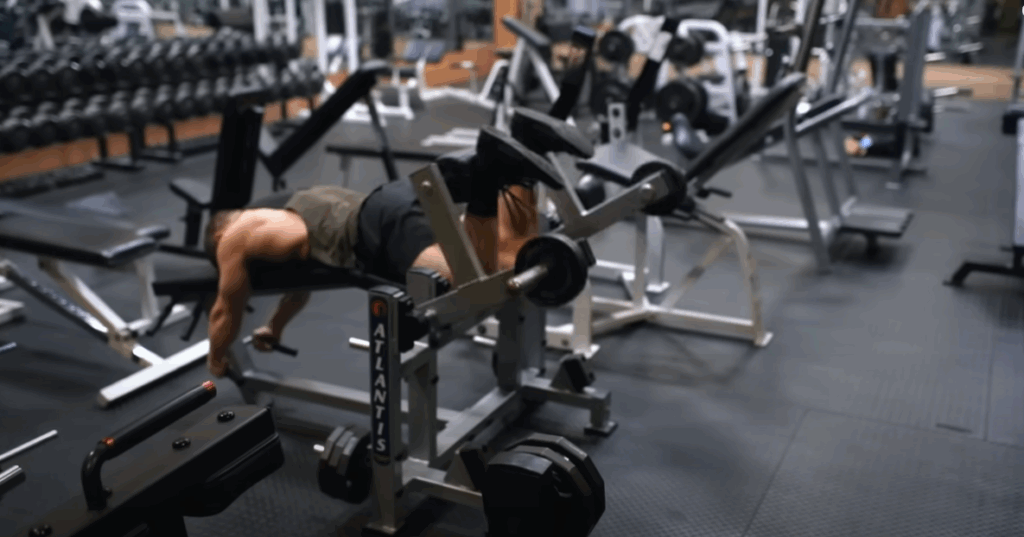High-Frequency Full-Body Training: Final Workout with a Shoulder-Focused Twist
If you’re following a high-frequency full-body training split, chances are you’re training multiple muscle groups nearly every day. In this article, we’re diving into the fifth and final full-body session of the week—but with a deliberate emphasis on the shoulders. This session strategically structures exercise order and volume to prioritize deltoid development while ensuring balanced stimulation across the entire body.

Starting Strong with Overhead Press
We begin the workout with three sets of six reps on the standing barbell overhead press—a compound movement often seen as a cornerstone of upper body strength. While some critics argue that this lift places too much emphasis on the anterior deltoid, which already gets plenty of work from bench pressing, it remains a valuable lift for building pressing strength in the vertical plane.
Despite front delt dominance, the overhead press also recruits the lateral and rear deltoids to a meaningful degree, especially when performed with solid technique. Including a vertical pressing motion in your weekly routine helps ensure joint health and balanced development, especially for those chasing both aesthetics and function.
To get more out of this movement, consider the following cues:
- Drive through the outside of your hands to prevent internal collapse and to emphasize shoulder abduction.
- Keep your elbows at a 45-degree angle at the bottom, then flare slightly once the bar clears your face to stack it directly over the shoulder joint.
- Use a wave progression approach: start with 3 sets in week one, increase to 4 and 5 sets in subsequent weeks with the same load, then return to 3 sets with added weight in week four.
This method helps sidestep common plateaus associated with the overhead press, particularly for intermediate and advanced lifters.

Lateral Delts with Reduced Fatigue: Dumbbell Lateral Raise
Next, we hit three sets of 15 reps on the dumbbell lateral raise. Unlike the cable version used earlier in the week, which places tension across both the stretched and contracted positions, dumbbells provide peak resistance only at the top of the lift. This makes them a lower-fatigue option—perfect for late-week training when cumulative muscle damage needs to be managed.
Because this movement is easier on recovery, it’s a good opportunity to push closer to failure without worrying about excess soreness spilling over into your next session. This principle—modulating effort and exercise selection based on fatigue profiles—is central to sustainable high-frequency training.
Back Emphasis: Seated Cable Row
Moving on, we incorporate three sets of 12 reps on the seated cable row. This row variation is easily adjustable to target different parts of the back. For lat development, tuck the elbows tightly and drive them down toward the hips. A slight forward lean at the bottom enhances the stretch and improves muscle engagement.
Want more mid-trap focus? Simply cue yourself to pull the elbows back and squeeze the shoulder blades together at the top. Small changes in form can produce dramatically different results depending on your goal.
Targeted Hamstring Work: Lying Leg Curl
With only a single lower-body movement in this session, we’re focusing entirely on hamstrings. Three sets of 12 reps on the lying leg curl hit the target without overloading the posterior chain, which was already trained with deadlifts earlier in the week.
To maximize this movement:
- Avoid letting the pad lift off your ankles. Maintain full control and consistent tension through the rep.
- Keep the rest of the leg relaxed, especially the calves, and think about squeezing the hamstrings to move the weight.
This movement is deceptively simple but can be one of the most effective when done with full control.
Isolation Biceps: Dumbbell Concentration Curl
Next up are three sets of 12 reps on the concentration curl. This isolated biceps move keeps the elbow locked into the inner thigh to prevent momentum. Starting in a neutral grip and rotating the wrist (supination) as you lift emphasizes the full contraction of the biceps. To keep the work in the target muscle, try using a relaxed grip and focus entirely on elbow flexion and supination.
Direct Core Work: Cable Crunch
Abdominal training takes center stage next with four sets of 15 cable crunches. Here, the key is to round the spine purposefully and allow the abs to perform spinal flexion. This is not a hip hinge movement—your shoulders and arms should remain locked while the abs pull the torso down like a sponge being squeezed.
Proper form and tempo go a long way here, so avoid rushing and focus on full contractions.
Calf Training: Seated Calf Raise
For calf development, we include four sets of 15 reps on the seated calf raise. This variation targets the soleus more due to the bent knee angle. Earlier in the week, straight-leg calf raises focused more on the gastrocnemius, offering a complete approach across sessions.
A helpful cue is to think of rolling over the balls of your feet rather than just lifting your heels. Use a pause at the bottom to eliminate momentum and emphasize muscular effort.
Wrapping Up the Week: Push-Up AMRAP Sets
We conclude the workout—and the week—with two all-out sets of push-ups, performed for as many reps as possible. These max effort sets give you the chance to push your mental and muscular limits without worrying about next-day fatigue, as rest days follow.
Keep your form tight: chest, stomach, and nose should all touch the ground each rep. Though your second set will inevitably be shorter due to fatigue, the goal is to progressively add reps across the program’s duration.

Weekly Volume Overview and Takeaways
A quick glance at the total volume spread across the week reveals a balanced full-body workload, with slight specialization toward shoulders. This highlights the versatility of full-body splits—they allow for frequent stimulation of each muscle group while adjusting volume intelligently across the week to avoid overtraining.
This type of training is ideal for intermediate to advanced lifters who want consistent hypertrophy without sacrificing performance or recovery.
Final Thoughts
This high-frequency, shoulder-prioritized session ties together efficiency, progression, and recovery strategy. With smart movement sequencing, deliberate volume modulation, and appropriate intensity cues, it’s an excellent example of how to maximize gains through evidence-based programming.
If you’re looking for a fresh take on your routine, integrating this type of workout—especially as part of a well-designed week—can yield impressive strength and physique results. Stay tuned for future updates as we transition into a hybrid powerbuilding phase that mixes full-body and upper-lower training for even more variety and progress.



